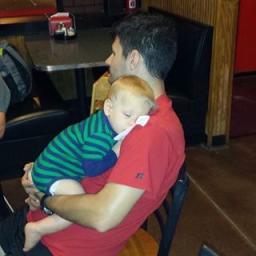Case
Real Life Situations
Mrs. Johnson is teaching addition to her 2nd grade class. All of her students do well in class. But when they go to the lunch line to buy food items none of them use addition . What can she do to get her students to translate her lessons to real world situations?
Solution #1
Mrs. Johnson should set up a make shift store in her room. She could bring items from home to "sell" in the store. Each student could be assigned an amount of money to purchase items with. Students should be required to use all of the money that has been assigned to them. Mrs. Johnson could run a cash register and assess student understanding as they bring items to buy with the money that has been assigned. Mrs. Johnson could give students some type of reward for correctly adding prices of items to total the amount of money they have been assigned to spend. At the end of the activity, Mrs. Johnson could discuss with the class how this is the same as it is in the real-world using the lunch room as an example. Then she could stand at the cash register in the lunch room and assess student mastery as they buy their lunches that day.
Solution #2
Mrs. Johnson could create a Market Day within the grade level. Items can be brought in, and students can earn "market money" throughout the weeks leading up to it. In order for a student to buy an item, they would have to know how much "market money" they have, and determine what can be bought by adding the sum of products. To pre-teach, Mrs. Johnson could have a sample of what is for sale. For example, a lollipop's cost is $1, while a box of crayons is $4. If the student only has $3, they would need to determine what opportunity cost they will choose by adding their items together, and reselecting if necessary. This would then carry over into the cafeteria for students to add to ensure they have enough of what is being spent.
Solution #3
Mrs. Johnson could set up a class to simulate a lunch line or simply get permission to take her students and use the lunch line to model using addition when buying food. She could also bring in menus from outside restaurants and explain how to use addition as well.
Solution #4
Mrs. Johnson could plan a field trip to a local store or market. Prior to the trip students would receive a certain amount of dollars to spend. When the students arrived at the store/market they would be instructed to choose items that they wanted to purchase, but they would have to return with a certain amount of money. This would help them with addition and subtraction.
Solution #5
Mrs. Johnson could collaborate with other grade-level teachers and the lunchroom ladies to create an alternative assessment environment. Over the course of the week, added money to lunch accounts and adding separate line items could become math problems as a way to pass a checkpoint in the lunch line. This allows individualized attention based on difficulty for HLL and LLL. Creating a reward (more recess) for the class with the highest accuracy would motivate students to practice the addition principle outside of the class and learn to apply to real world principles. Be careful to not exclude those with free-reduced lunch.
Solution #6
She can provide them with real world connections during the math instruction. By doing this, they are transferring their knowledge to real world connections that they can carry with them. They can begin practicing word problems that may involve the cafeteria scenarios.
Solution #7
Many schools have begun implementing school 'bucks' as a way of encouraging positive behaviors and rewarding students. These bills can then be used to allow students to purchase something from the school or class store. I would suggest being very intentional when students shop for their prizes and having them think aloud as they are buying and paying!

